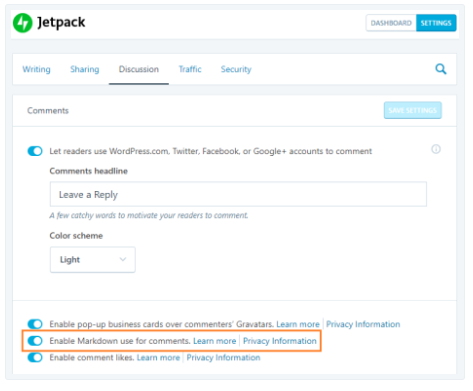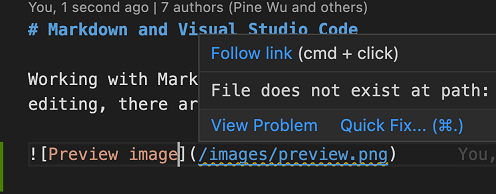

#Markdown link to section code#
Headings would be rendered this way (I think the rendering should vary depending on the Markdown interpreter): Lorem ipsum dolor sit amet įor a concrete example, you can read my blog’s source code on GitHub (it is written in VueJS but easily understandable). Need more detail Refer to the official CommonMark spec, or discuss CommonMark with us. Nullam aliquet, lacus ut luctus euismod, ex lacus iaculis neque, eget suscipit quam nulla viverra mi. Markdown Reference Want to experiment with Markdown Try our 10 minute interactive tutorial, or play with the reference CommonMark implementation. To create an inline link, you wrap the link text in brackets ( ), and then you wrap the link in parenthesis ( ( ) ). Lorem ipsum dolor sit amet, consectetur adipiscing elit. An alternative solution would be to manually write the links in Markdown. Progressive enhancementĪs this solution relies on JavaScript to work, users with JavaScript disabled won’t be able to benefit this feature. Then you just have to run this function when the page loads. There are tons of packages on npm to do this but I prefer the solution of doing my custom helper: it’s lightweight, tailored for my needs and doesn’t depend on someone else’s code. It will be the glue that will associate the hyperlink’s href and the section’s id (like said above).Įach heading’s link on the page will have its own slug. To make anchor links working, we first have to create a slug for every heading we’ve got. The Ultimate Markdown Guide (for Jupyter Notebook) by Hannan Satopay Analytics Vidhya Medium Write Sign up Sign In 500 Apologies, but something went wrong on our end. So I made a short JavaScript function to fix this. But one common pitfall I run through while working with Markdown is the inability to automatically create anchor links on headings in blog posts. I’m really interested and work a lot with JAMstack websites where content is often written in Markdown which is a great way for non-technical people to write content in a technical environment. Markdown supports adding various kinds of links. You can read more about how anchor links work here. #some-anchor) and must match with the corresponding section’s id they jump to.

They are built the same way except that their href attribute ends with a hash symbol followed by a string (e.g. But some of them let you jump through different section of a website: they are anchor links. If you want to paste a link containing both the name and URL (address) of an item in a plain. They allow you to navigate through pages of the web. You can use them as the basis for the Hook to Copied Link command. This is some text *emphased* with asterisks.One of the oldest feature of the web are links. Surrounding some text with one asterisk or one underscore bar gives normal emphasis, while surrounding some text with two asterisks or two underscores results in strong emphasis: *normal emphasis with asterisks* To give emphasis to some text with Markdown, we use asterisks ( *) or underscores ( _). On most websites, emphasis is shown as italic while strong emphasis is bold.
TheThere is two types of emphasis: normal emphasis and strong emphasis. Then a markdown link like: link text (abcde) anywhere in the document takes you there. Copying and Pasting Emoji In most cases, you can simply copy an emoji from a source like Emojipedia and paste it into your document. URLs and URLs in angle brackets will automatically get turned into links. You can put emphasis some part of your text inside a paragraph. There are two ways to add emoji to Markdown files: copy and paste the emoji into your Markdown-formatted text, or type emoji shortcodes. You can use numbers for reference-style link definitions Or leave it empty and use the link text itself. If you really want to force a line break somewhere, insert two spaces at the end of the line.

It was developed by John Gruber (with help from Aaron Swartz) and released in 2004 in the form of a syntax description and a Perl script ( ) for converting Markdown to HTML. Line breaks inserted in the text are removed from the final result: the web browser is in charge of breaking the lines depending of the available space. Markdown is a plain text format for writing structured documents, based on conventions for indicating formatting in email and usenet posts. This is a small paragraph illustrating how


 0 kommentar(er)
0 kommentar(er)
